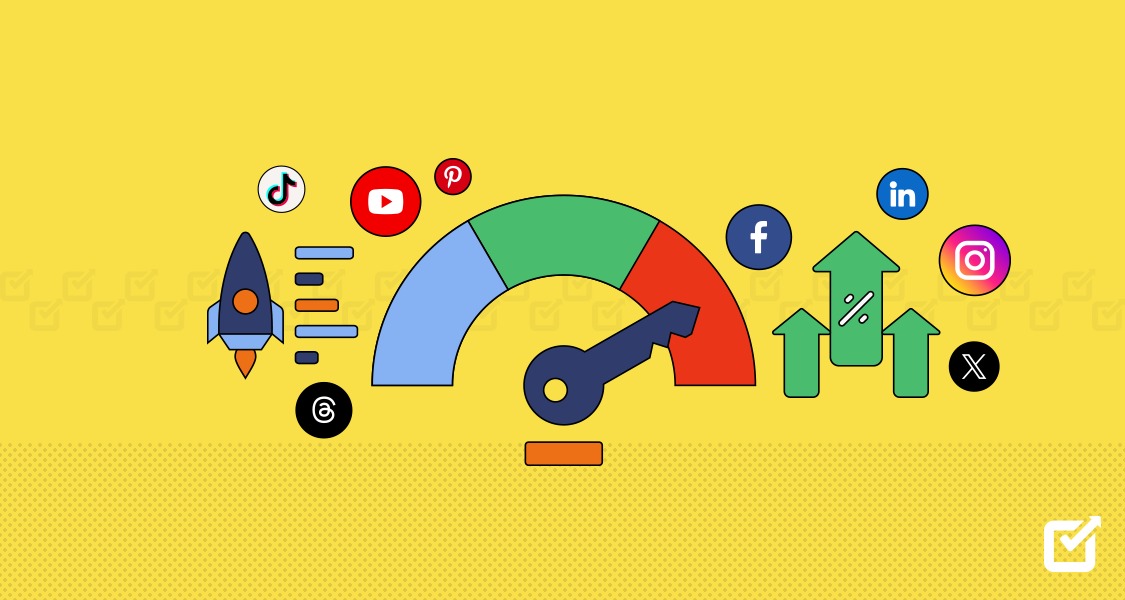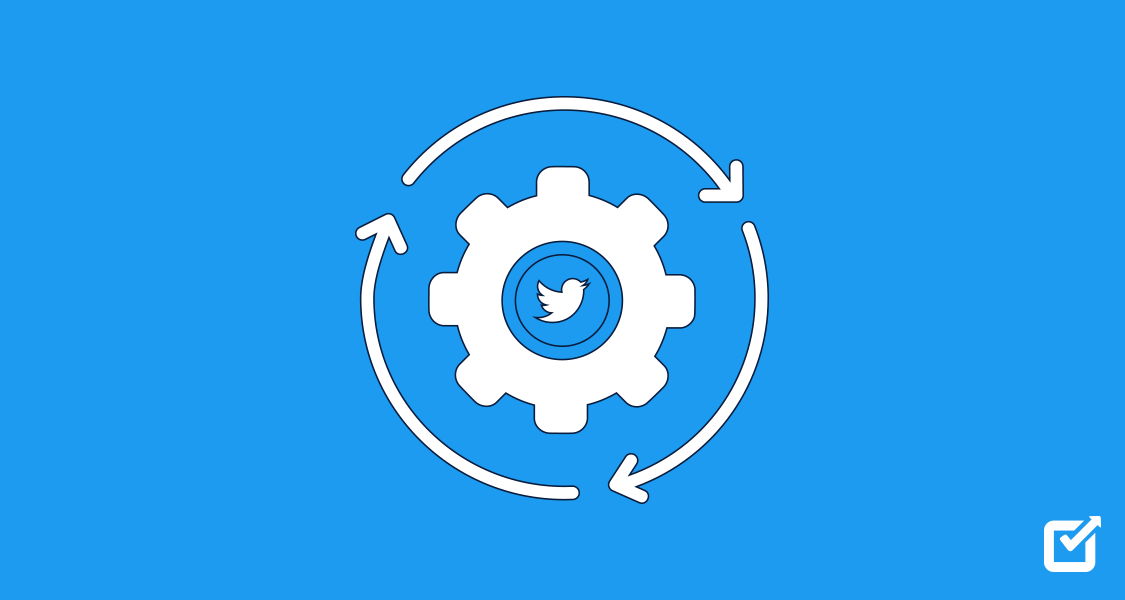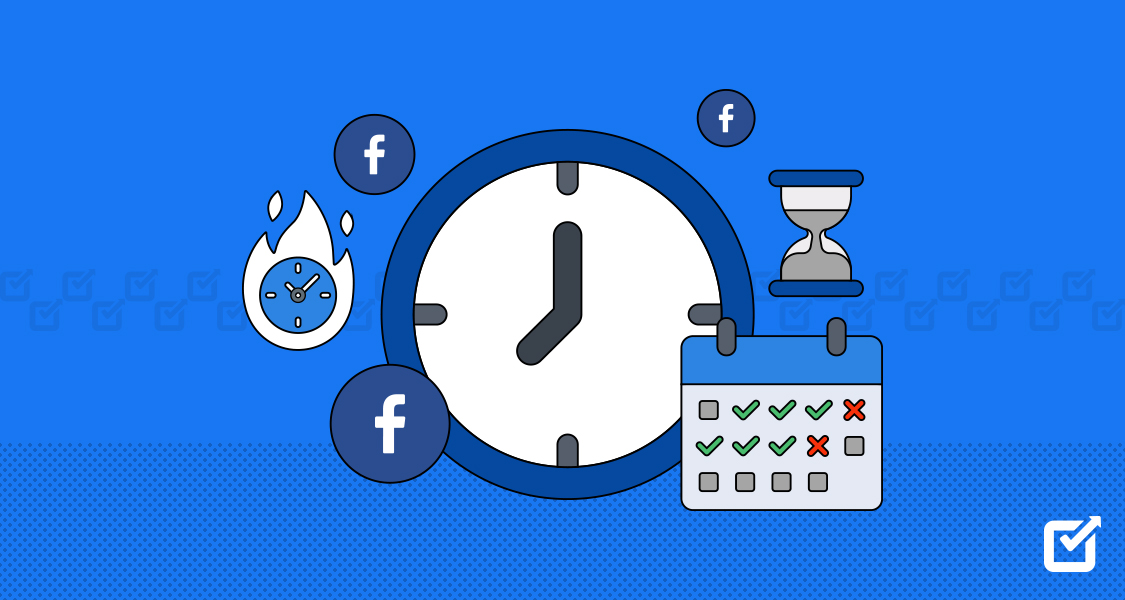Have you ever stopped to consider if your social media efforts are truly helping your business goals?
With over 4.89 billion people on social media globally, it presents a powerful platform to reach your target audience. However, measuring the effectiveness of your efforts is crucial.
This is where Social Media KPIs (Key Performance Indicators) come in. These act as pre-determined goals that allow you to track your progress. You can monitor metrics like engagement, follower growth, and conversions; you can gauge how well your social media strategy resonates with your audience.
There are several ways to track your KPIs, such as by using an Analytics tool. In this guide, we will cover 18 social media KPIs, as well as ways to track them.
So let’s get started!
Keep an Eye on Your Social Buzz with Social Champ.
Catch every like, share, and comment across your social pages with Social Champ’s Analytics Tools. Check out how your social media is doing today!
What Are Social Media KPIs?
So, what exactly are social media KPIs? Well, they’re these metrics that show how your social media game is playing out. Are you making the impact you hoped for? These KPIs, like the ones you see in your Instagram Insights, let you in on all these details.

Why Is It Important to Track Social Media KPIs?
Here’s why it’s essential to set and track social media marketing KPIs:
- Track progress: KPIs help you see how you’re doing on your company’s big goals.
- Make smart decisions: KPIs show what’s working so you can make decisions based on facts.
- Compare performance with others: KPIs let you see how you’re doing compared to competitors, helping you understand your market position and strengths.
Related Article: How to Craft Detailed Social Media Reports in 2024
18 Social Media KPIs to Track
There are many important measures (KPIs) for social media marketing.
We’ve grouped them into five main types, with some everyday things businesses often check in each group.
- Visibility
- Engagement
- Conversion
- Brand Awareness
Social Media KPIs: Visibility
These numbers tell you how many people see your content, including those who follow you and those who don’t.
Being seen by more people means more chances to interact, connect, and get your followers to take a specific action.
Here are the top things to watch to see how visible you are:
Impressions
Social media impressions measure how many times your content is displayed, regardless of user interaction. This includes:
- Original post views: Every time your content appears in someone’s feed.
- Shared post views: When someone else shares your content, expanding its reach.
- Multiple views by the same person: Scrolling past or revisiting your post counts as additional impressions.
High impressions indicate widespread exposure, potentially increasing brand awareness and attracting new followers. However, impressions alone don’t guarantee engagement.

A snapshot of Facebook Video Views
Video views measure how often your content is actively watched on social media platforms. The criteria for counting a view varies. For instance, Facebook requires at least 3 seconds of watch time, while YouTube counts a view as soon as someone clicks play.
A high view count suggests your videos resonate with your audience. Analyzing video views helps you understand what type of content your audience enjoys. This allows you to tailor your future videos to their preferences.

A snapshot of YouTube Post Reach
Post reach is about how many different people have seen your post on social media.
This is different from impressions. The difference? Reach counts each person only once, even if they see your post several times.
For example, checking “See insights and ads” on Facebook shows how many individuals your post has reached.

A snapshot of Facebook Reach tells you how widely your content is being shared beyond just your followers. It’s a good way to measure the size of the audience you could potentially reach.
Follower Count

A snapshot of Instagram The follower count is the number of people who have decided to follow your social media page. This includes both people and other businesses.
Your follower count goes up when new people follow you, and down if people unfollow you.
Losing followers might not always be bad. Your posts are now more focused on a specific group of people.
The number of followers you have shows how popular you are. It also suggests whether people enjoy your content enough to keep seeing it.
Audience Growth Rate
Audience growth rate shows how fast your number of followers changes over time. This is shown as a percentage. To find this rate, subtract the starting number of followers from the ending number, divide by the starting number, and then multiply by 100.

Knowing your audience’s growth rate helps you see how quickly you get new followers.
Fast growth means your social media efforts are working well. Slow growth might mean you need to change your strategy.
Social Media KPIs: Engagement
Engagement metrics look at how people interact with your posts. They help you know how interested people are in your brand based on how they engage with your content.
Some standard engagement metrics include:
Reactions
Want to know if your content is hitting the right spot? Look no further than reactions! With a quick tap or click on buttons like “Like,” “Love,” or even a good-natured “Haha,” your audience can easily share their thoughts.
Different platforms offer varying options, with Facebook boasting a more comprehensive range compared to Instagram’s focus on “Likes.” But the core idea remains: these reactions are your instant feedback loop. Seeing them pile up tells you what content resonates with your followers. After all, a bunch of thumbs up (or other reactions) is a good sign you’re on the right track to creating content that truly clicks!

A snapshot of Facebook Comments
Comments are people’s responses to your posts. They can talk directly about the post or reply to others. Users might also mention your or someone else’s account, making the conversation more engaging.

Comments indicate a strong interest in your content. They can make your posts more visible and provide insights into what your audience likes, helping you refine your strategy.
Shares
When someone hits that “share” button, they’re essentially recommending your content to their network, along with their own personal touch. This is powerful because it exposes your content to a whole new audience, potentially leading to a surge in visibility and followers.
After all, a share is like a personal endorsement, a sign that your content is truly engaging and worth spreading. The more shares you see, the better you know you’re on the right track to creating content that resonates with your audience.

A snapshot of Instagram Saves
Saves let users keep your posts to look at later. They can save them in general or organize them into categories for easy access.
If someone saves your post, it means they find it valuable and want to come back to it. This is a strong engagement indicator.
Average Engagement Rate
Think of engagement rate as a gauge measuring how your audience interacts with your content. It reflects how well your posts resonate with your followers. Here’s how it’s calculated:
- Divide total engagements: This includes reactions (likes, loves, etc.), comments, and shares.
- By total posts: Consider the number of posts you’ve shared within a specific timeframe (e.g., a week or month).
- Then divide by your follower count: This shows the engagement relative to your audience size.
- Finally, multiply by 100: This translates the fraction into a percentage.
So, what does a high engagement rate indicate?
A strong engagement rate suggests your content is hitting the mark. It sparks interest, encourages interaction, and signifies that your followers find your posts relevant and valuable. This positive response is a clear indicator that you’re on the right track to creating quality content that resonates with your audience.
Social Media KPIs: Conversion-Focused
Click-Through Rate (CTR)
A high CTR indicates your content is magnetic! It entices viewers and compels them to click for more information. This suggests your messaging is effective and grabs attention.
The formula is simple:
- Divide clicks by impressions: Clicks are the number of times your link was clicked, and impressions are the total number of times your post was displayed.
- Multiply by 100: Convert the result into a percentage for easier interpretation.
CTR= Clicks/Impressions * 100%
Conversion Rate
The conversion rate essentially measures the percentage of users who take a desired action, such as buying a product, signing up for a service, or downloading an app after clicking on your social media post or ad.
A simple formula helps you determine this rate:
(Number of Conversions / Number of Clicks) x 100)
This conversion rate serves as a key indicator of how well your social media strategy is at converting interest into concrete actions, ultimately contributing to your business goals.
Cost Per Click (CPC)
Cost Per Click is the average cost paid for each click on your paid social ads. Here’s the formula for calculating CPC:
CPC= Total Ad Spend / Number of Clicks.
CPC helps you understand the cost-effectiveness of your paid campaigns, guiding budget allocation and strategy optimization.
Sales Revenue
Tracking the revenue generated from social media involves understanding the customer journey. You can utilize tracking codes embedded in URLs or leverage analytics tools. This allows you to see how a customer interacts with your social media content and then trace their path to a purchase on your website.
By attributing sales to their social media origin, you gain insights into the financial impact of your social media efforts. This data quantifies the return on investment and empowers you to prioritize platforms and content demonstrably driving sales, ultimately strengthening your social media marketing strategy.
Review Ratings
Social media review ratings, typically 1 to 5 stars, offer a direct window into customer sentiment. These ratings serve as feedback, indicating how much customers appreciate your service or product. A higher average rating generally translates to greater customer satisfaction, highlighting areas where you excel. Conversely, lower ratings can pinpoint aspects requiring improvement.
Customer Satisfaction Score (CSAT)
CSAT is a metric that reflects customer satisfaction through direct feedback. It’s calculated by dividing the number of satisfied customers (those rating 4 or 5 on a scale) by the total number of responses, multiplied by 100 to express it as a percentage.
CSAT= ([Number of satisfied customers (ratings 4 and 5)] / [Total responses]) x 100.
A high CSAT indicates a larger proportion of happy customers, signifying the effectiveness of your product or service in meeting their needs. Conversely, a lower CSAT suggests areas for improvement.
Social Media KPIs: Brand Awareness
Here are some social media KPIs for brand awareness
Brand Mentions
Social media brand mentions, encompassing both direct tags and general discussions, serve as indicators of your brand’s online visibility and awareness. The frequency of these mentions reflects how much people are actively talking about your brand. A surge in mentions signifies a broader reach and potentially increased brand recognition. Conversely, a decline in mentions might suggest a need to refine your social media strategy to reignite engagement.
Branded and Campaign Hashtags
Crafting unique hashtags specifically for your company or campaigns has several benefits on social media. These hashtags act like personalized labels for your online conversations.
Firstly, they boost content discovery. Users searching for information related to your campaign can easily find relevant posts by looking for your unique hashtag. This expands the reach of your content and attracts a wider audience interested in your offerings.
Secondly, these hashtags can also be used as tracking tools. By monitoring the reach and engagement metrics associated with your unique hashtag, you gain insights into the campaign’s effectiveness. You can see how many people are interacting with your content, measure the overall sentiment, and gauge the campaign’s impact.
Furthermore, incorporating elements of your brand name or slogan into your custom hashtag strengthens the brand association. This subtle reminder reinforces the connection between the campaign and your company in the minds of the audience, solidifying brand recognition in the social media landscape.
Featured Article: 35+ Best Social Media Marketing Tools in 2024!
How to Pick the Right Social Media KPIs?
We’ve explored various social media KPI examples, but remember, you don’t need to monitor every single one.
Here’s how to set social media KPIs for your social media efforts:
Identify Your Goals
First, pinpoint what you hope to achieve with your business. These goals will guide your social media strategy.
Are you looking to enhance brand visibility, increase sales, or elevate customer support?
Ensure your social media KPIs are in line with these objectives.
For example, if a small business’s main aim is to increase sales, it should concentrate on KPIs such as conversion rate and sales revenue.
Consider Your Sector
The specific industry you operate within significantly determines which Key Performance Indicators (KPIs) are most relevant and critical for your business. Different sectors have varying goals, audiences, and success metrics that are essential to their growth and sustainability.
For example, if you’re in the e-commerce sector, your business’s lifeblood hinges on how effectively you can convert visitors into paying customers and how much revenue each sale generates. Therefore, conversion rates and sales revenue become indispensable metrics. These KPIs provide insight into the health of your sales funnel and help identify areas where customer experience can be optimized to boost sales.
On the other hand, if you’re operating within the nonprofit sector, your focus shifts towards maximizing message reach and engagement. Since the primary goal is often to spread awareness, educate, or garner support for a cause, metrics like average engagement rate and overall reach are more pertinent. These indicators help nonprofits understand how well their content resonates with their target audience and how far their message spreads across social media platforms.
Start with Just the Essentials
Effective performance tracking starts with a strategic selection of KPIs. Focus on a small set of KPIs directly linked to your main goals. This targeted approach ensures you allocate resources efficiently to the factors driving your success.
This is because tracking excessive metrics muddles the picture and distracts from your core objectives. A flood of information can bury essential insights. By limiting KPIs to a critical few, you gain clarity and identify areas for improvement, enabling strategic decision-making.
As your business grows, you can incorporate additional KPIs, but do so thoughtfully. Each new metric should strictly align with your goals and offer valuable performance data. This measured expansion prevents information overload and ensures your tracking stays clear and actionable, empowering data-driven choices that propel your business forward.
Setting Social Media KPI Goals
To set goals for your social media KPIs, follow these simplified steps:
Compare with Competitors
- Understand your competitors’ performance using tools like Social Tracker.
- Connect your social accounts to the tool and add your competitors.
- Review their audience size, posting activity, and engagement levels to set your own benchmarks.
Set SMART Goals
- Make sure each KPI goal is Specific, Measurable, Achievable, Relevant, and Time-bound.
- This approach ensures your goals are clear, trackable, realistic, aligned with your business, and have a deadline.
Tracking Your Social Media KPIs
You can track your KPIs in the following ways:
Use Built-in Analytics
Platforms like Facebook and Instagram offer their own insights tools to review your profile’s performance, understand audience engagement, and find the best posting times.
Use Third-Party Tools
Start by identifying a limited set of KPIs directly tied to your core business objectives. Tools like Social Champ’s analytics can simplify data collection across platforms, helping you monitor follower growth, post reach, and engagement trends.
Social Media KPIs Template
A social media KPIs template should include columns for each KPI you’re tracking, the target value for each KPI, the actual values achieved, and any notes on actions taken or adjustments needed. This template can be created in Excel or any other spreadsheet software and should be reviewed regularly to assess performance and make necessary adjustments.
In Conclusion
Keeping track of a wide range of social media KPIs, including how much people interact with your posts (like comments and shares) and how your audience is growing (like follower count and how far your posts reach), is key to understanding how well your social media strategy is working.
To tackle the complex world of social media effectively, it’s wise to set SMART goals—goals that are specific, measurable, achievable, relevant, and time-bound. These goals help steer your social media plan and give you clear markers of success.
Using the analytics tools that social media platforms offer and advanced tools like Social Champ lets you dig into your data. This way, you can see how you stack up against competitors, track your progress over time, and spot areas where you can improve your social media KPIs.
As social media keeps changing and new trends emerge, paying attention to these KPIs is more critical than ever. This ensures your brand adapts to the changing online world, continues to connect deeply with your audience, and enjoys long-term success in your social media campaigns.
Frequently Asked Questions
1. What Is the KPI in Social Media?
2. What Are the Performance Measures for Social Media?
3. What Are the 5 KPIs?
- Engagement Rate: Measures how actively your audience is involved with your content.
- Reach: The number of unique users who see your content.
- Follower Growth: Tracks how your follower base increases over time.
- Click-Through Rate (CTR): The percentage of people who click on a link in your post.
- Conversion Rate: The percentage of users who take a desired action after clicking on a link in your post.
4. What Is the KPI for Social Media Content Creators?
5. What is KPI in TikTok?
6. How Do I Choose a Social Media KPI?
- Identifying your social media goals (awareness, engagement, conversion, etc.).
- Understanding your audience and what actions are most valuable to your brand.
- Selecting metrics that directly align with your goals. For example, if your goal is to increase brand awareness, focus on reach and impressions. If it’s engagement, look at likes, comments, and shares.
- Considering the specific platforms you’re using, as different platforms may have unique metrics to track.

















